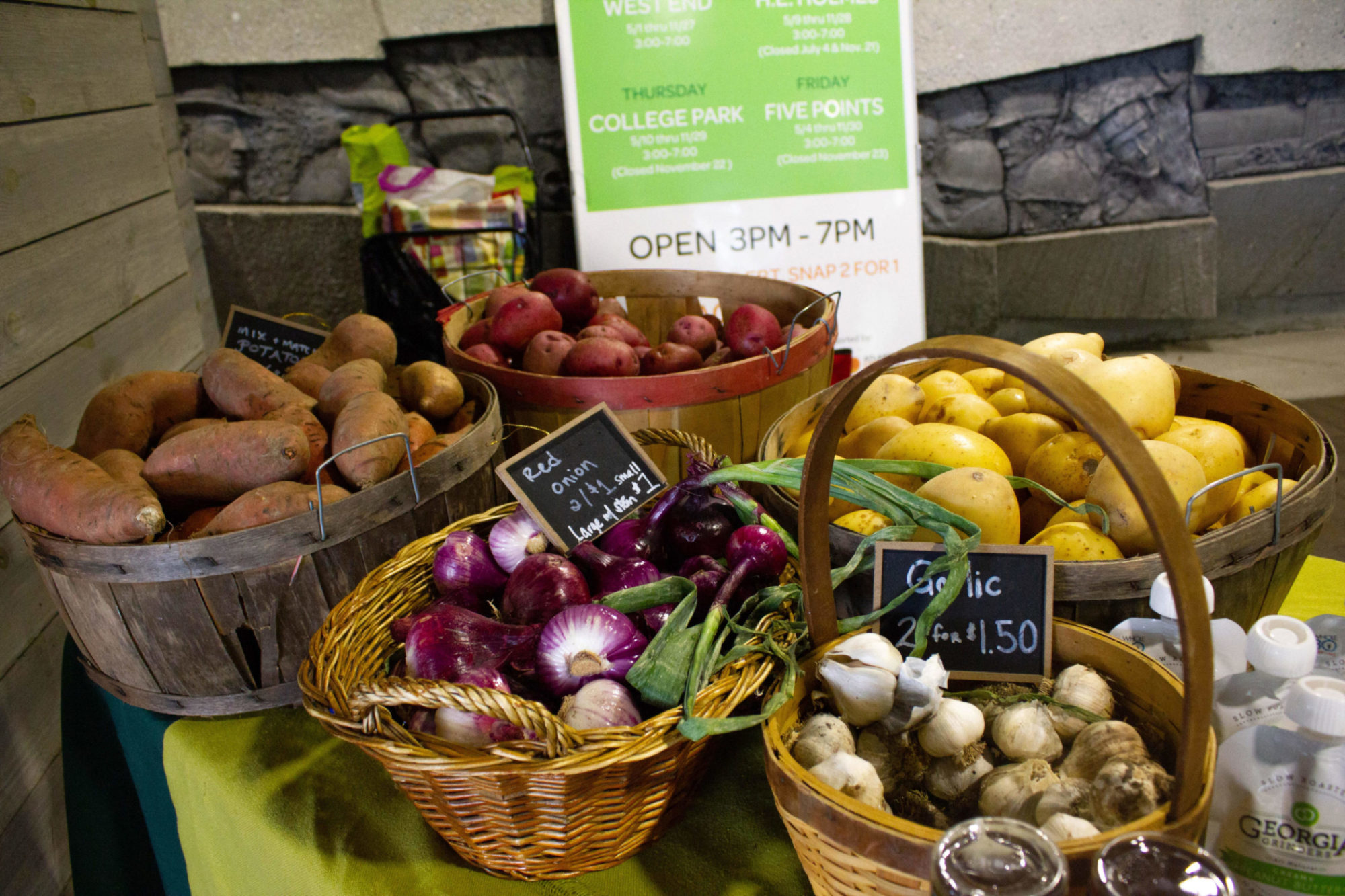
Many students from the suburbs have to develop new habits when coming to the city for school, especially when it comes to buying groceries. But many low-income communities inside the city have been struggling with the same thing for years.
Low-income communities often lack access to fresh produce, with some neighborhoods being several miles from any grocery store, leaving many residents with few options. The term “food desert” is one you’ll often hear to describe this. The term was coined in 2002 in a paper published in the British Medical Journal to describe areas of public housing in Scotland.
Here at home, Georgia State’s downtown campus is located in a food desert, with the closest food options for students being the nearby drug stores. Considering the Sweet Auburn Curb Market’s limited hours, the closest consistent option is the Publix located on Piedmont, leaving many students without cars or meal plans stranded without any healthy options.
“I had a way worse diet because of how inaccessible the grocery stores were,” Georgia State junior Abbey Burmood said. “I bought way less fresh produce.”
Recently, the term food desert has gained traction in research and policy discussions of social and civil infrastructure. Today, the AJC keeps a map updated on areas around the metro-area that meet the United States Department of Agriculture’s (USDA) definition of a food desert, low-income communities located more than one mile from a reliable source of fresh produce and other healthy whole foods.
In 2015, MARTA launched a program to address this. MARTA put out a notice it was planning to provide produce markets at their stations, an effort to bring produce to underserved areas. Immediately, many nonprofits and community gardens stepped up, leading to the corral of public/private partnerships which make up the initiative today. That brought on people like Hilary King, the director of special projects and evaluation for Community Farmers Markets.
The MARTA Fresh Markets program is made up of four managing partners, Mart, Organix Matters, Food Oasis Atlanta and Community Farmers markets. These get supplemented with support from non-profit community groups which fill smaller roles.
Additional services are filled by other non-profit community groups. Wholesome Wave is a non-profit company that works nationally to make produce more accessible. They do this chiefly by doubling the value of SNAP funds. SNAP is a federal program of the USDA formed to improve access to nutrition across income levels. Through a collaboration with the MARTA Fresh Markets, $10 of SNAP funds is worth $20 of vegetables. Their volunteers are also found at the markets providing support for those looking to apply for food stamp services like SNAP.
This collaboration has required flexibility and communication from all members involved. A party like MARTA can provide logistical support, whereas Organix Matters tackles the daily management side. Community Farmers Markets and the Southwest Atlanta Growers Cooperative provide a network of produce growers the markets source food from. Any food not sold at the markets is donated to the Atlanta Community Food Bank.

“It helps to clarify roles and expectations,” King said. “It’s fluid too, as we have to react to challenges we couldn’t have seen… A lot of it is allowing each member to do what they’re best at.”
But at which stations would markets be most effective? Research was gathered, combining USDA data on income and food access, MARTA’s own data on ridership, and the results of polling MARTA conducted.
In July of 2015, a market began at the West End station to serve as a pilot for the final program and the lessons learned there shaped the later expansions. By the end of the year, they had sold 8,000 pounds of produce. Beginning in 2016, three more markets were launched: Hamilton E. Holmes, Five Points and College Park stations, each running one day a week.
But not everything remained peachy and problems frequently arose in the early stages. On the ground, organizers realized the limited economy of space and staff meant the standard farmers market tents and tables approach couldn’t work. Then, the architecture firm Perkins + Will stepped in and designed wooden produce stands that organizers now believe to work much better.
This kind of experimentation is necessary for the program, which is in peerless territory as far as public/private produce initiatives are concerned. To those involved, that’s part of what makes it exciting.
“There isn’t another produce initiative that partners directly with the transit authority in the country,” King said.
As time has gone on, smaller and more focused non-profit organizers have gotten involved. One of those is Gangstas to Growers, a community program focused on reducing recidivism by providing jobs and skills to at risk youth and to the formerly incarcerated. They make and sell hot sauce at events and markets like the MARTA Fresh Markets all over the city. These sales allow Gangstas to Growers to provide classes for members on topics ranging from financial literacy to yoga.
The MARTA Fresh Market’s success gained notice. The Atlanta Foodwell Alliance is a group aggregating data on local food initiatives into one report. They featured the MARTA Fresh Market in a case study into the The Atlanta Local Food Baseline Report. They combined existing data with data they gathered on how food is being grown in the metro area. They published that data in order to connect the various food growers and non-profits.
According to their assessment of the services provided by the MARTA Fresh Markets, it is through collaboration that the markets find their strengths. The MARTA Fresh Markets combine a variety of groups with differing perspectives and skills from different metro areas. The more groups become involved, the better the markets function.
According to the data they gathered, in 2016 the markets reached 13,000 visitors and sold more than 15,000 pounds of produce. In Hilary King’s own words, “It’s been really fruitful.”
